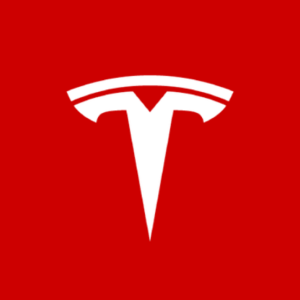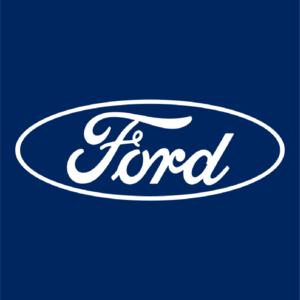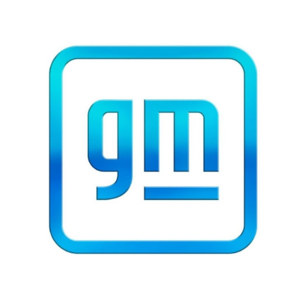
THOR Industries (THO)
THOR Industries is in for a bumpy ride. Its poor sales growth and falling returns on capital suggest its growth opportunities are shrinking.― StockStory Analyst Team
1. News
2. Summary
Why We Think THOR Industries Will Underperform
Created through the acquisition and merger of various RV manufacturers, THOR Industries manufactures and sells a range of recreational vehicles, including motorhomes and travel trailers, catering to consumers seeking the freedom and comfort of the RV lifestyle.
- Annual sales declines of 3.3% for the past two years show its products and services struggled to connect with the market during this cycle
- Earnings per share have dipped by 1.2% annually over the past two years, which is concerning because stock prices follow EPS over the long term
- Sales are projected to tank by 1.6% over the next 12 months as its demand continues evaporating


THOR Industries is skating on thin ice. We’re on the lookout for more interesting opportunities.
Why There Are Better Opportunities Than THOR Industries
Why There Are Better Opportunities Than THOR Industries
At $106.24 per share, THOR Industries trades at 23.6x forward P/E. This multiple expensive for its subpar fundamentals.
It’s better to pay up for high-quality businesses with strong long-term earnings potential rather than to buy lower-quality companies with open questions and big downside risks.
3. THOR Industries (THO) Research Report: Q3 CY2025 Update
RV manufacturer Thor Industries (NYSE:THO) reported revenue ahead of Wall Streets expectations in Q3 CY2025, with sales up 11.5% year on year to $2.39 billion. On the other hand, the company’s full-year revenue guidance of $9.25 billion at the midpoint came in 2.3% below analysts’ estimates. Its GAAP profit of $0.41 per share was significantly above analysts’ consensus estimates.
THOR Industries (THO) Q3 CY2025 Highlights:
- Revenue: $2.39 billion vs analyst estimates of $2.07 billion (11.5% year-on-year growth, 15.4% beat)
- EPS (GAAP): $0.41 vs analyst estimates of -$0.07 (significant beat)
- Adjusted EBITDA: $131 million vs analyst estimates of $81.41 million (5.5% margin, 60.9% beat)
- The company reconfirmed its revenue guidance for the full year of $9.25 billion at the midpoint
- EPS (GAAP) guidance for the full year is $4 at the midpoint, missing analyst estimates by 1.9%
- Operating Margin: 2.8%, up from 0.5% in the same quarter last year
- Market Capitalization: $5.82 billion
Company Overview
Created through the acquisition and merger of various RV manufacturers, THOR Industries manufactures and sells a range of recreational vehicles, including motorhomes and travel trailers, catering to consumers seeking the freedom and comfort of the RV lifestyle.
THOR Industries was founded in 1980 by Wade F. B. Thompson and Peter B. Orthwein to produce recreational vehicles (RVs) that offer consumers the freedom to explore and travel comfortably.
THOR Industries provides a range of RVs, including motorhomes, travel trailers, and fifth wheels, designed to meet the diverse needs of consumers. The company's product offerings address the desire for mobility and convenience in leisure travel, making it easier for individuals and families to embark on road trips and outdoor adventures. For instance, THOR's motorhomes are equipped with modern amenities such as full kitchens, comfortable sleeping quarters, and entertainment systems, providing a home-like experience on the road.
The primary revenue sources for THOR Industries come from the sale of its RVs and related products. The company's business model focuses on manufacturing and distributing its vehicles through a network of independent dealers. The company appeals to a range of consumers, from first-time buyers to experienced RV users, by offering a variety of models and customization options. Recurring revenue is generated through after-sales services, parts, and accessories.
4. Automobile Manufacturing
Much capital investment and technical know-how are needed to manufacture functional, safe, and aesthetically pleasing automobiles for the mass market. Barriers to entry are therefore high, and auto manufacturers with economies of scale can boast strong economic moats. However, this doesn’t insulate them from new entrants, as electric vehicles (EVs) have entered the market and are upending it. This has forced established manufacturers to not only contend with emerging EV-first competitors but also decide how much they want to invest in these disruptive technologies, which will likely cannibalize their legacy offerings.
THOR Industries' competitors in the recreational vehicle market include Winnebago Industries (NYSE:WGO), Forest River (a subsidiary of Berkshire Hathaway NYSE:BRK.B), Polaris Inc. (NYSE:PII), and Knaus Tabbert (ETR:KTA).
5. Revenue Growth
A company’s long-term performance is an indicator of its overall quality. Any business can put up a good quarter or two, but the best consistently grow over the long haul. Unfortunately, THOR Industries’s 2.8% annualized revenue growth over the last five years was sluggish. This was below our standards and is a poor baseline for our analysis.
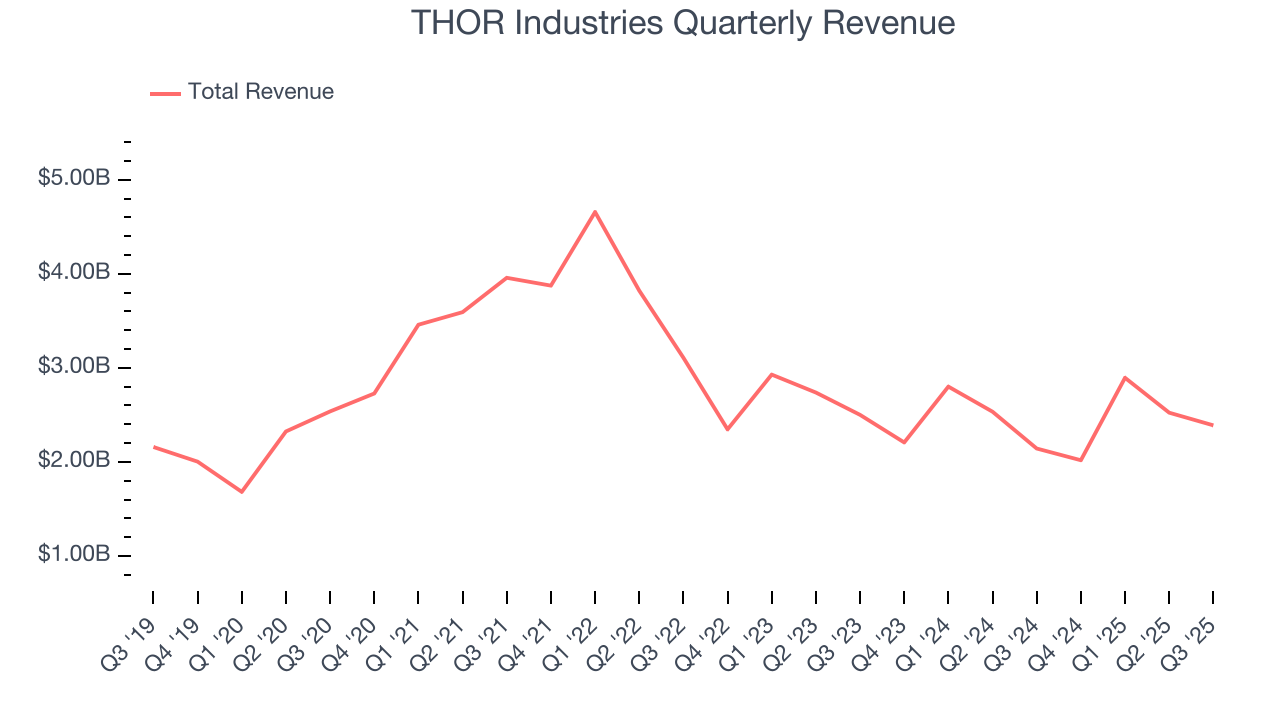
Long-term growth is the most important, but within industrials, a half-decade historical view may miss new industry trends or demand cycles. THOR Industries’s performance shows it grew in the past but relinquished its gains over the last two years, as its revenue fell by 3.3% annually. 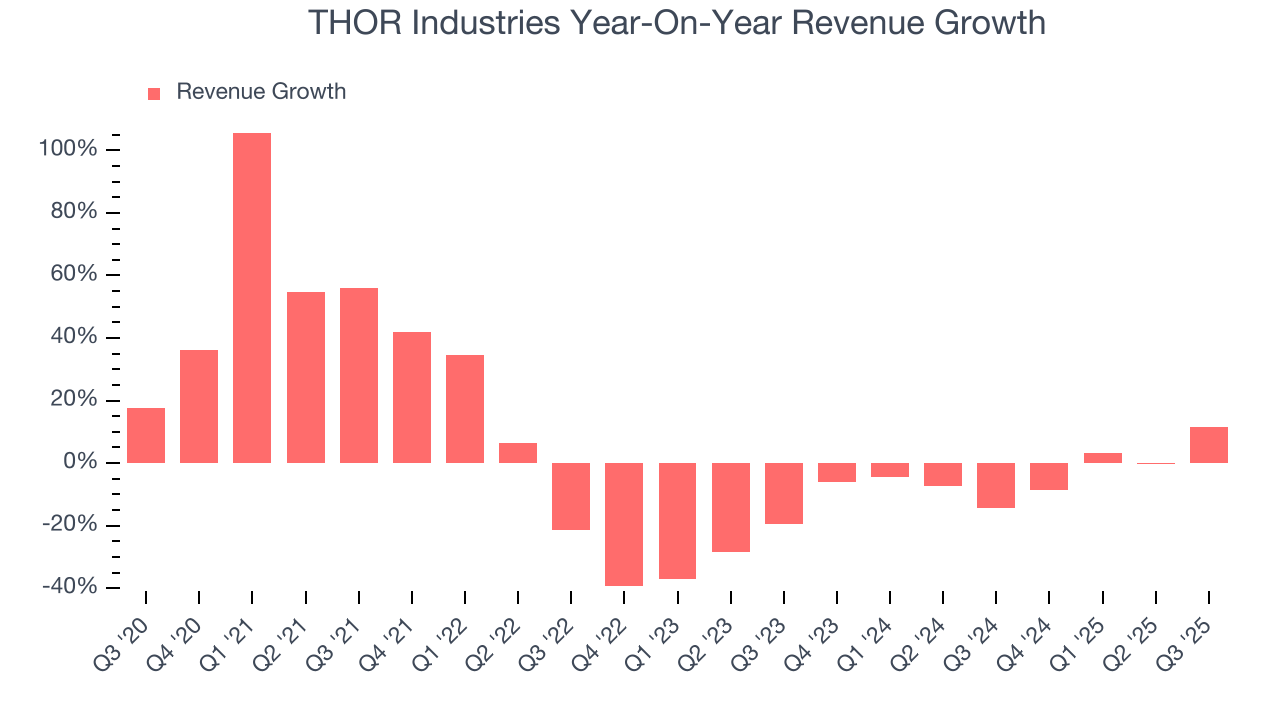
This quarter, THOR Industries reported year-on-year revenue growth of 11.5%, and its $2.39 billion of revenue exceeded Wall Street’s estimates by 15.4%.
Looking ahead, sell-side analysts expect revenue to decline by 2.2% over the next 12 months, similar to its two-year rate. While this projection is better than its two-year trend, it’s tough to feel optimistic about a company facing demand difficulties.
6. Gross Margin & Pricing Power
At StockStory, we prefer high gross margin businesses because they indicate the company has pricing power or differentiated products, giving it a chance to generate higher operating profits.
THOR Industries has bad unit economics for an industrials business, signaling it operates in a competitive market. This is also because it’s an automobile manufacturer.
Automobile manufacturers have structurally lower profitability as they often break even on the initial sale of vehicles and instead make money on parts and servicing, which come many years later - this explains why new entrants such as Rivian, Lucid, and Nikola have negative gross margins. As you can see below, these dynamics culminated in an average 15.3% gross margin for THOR Industries over the last five years.
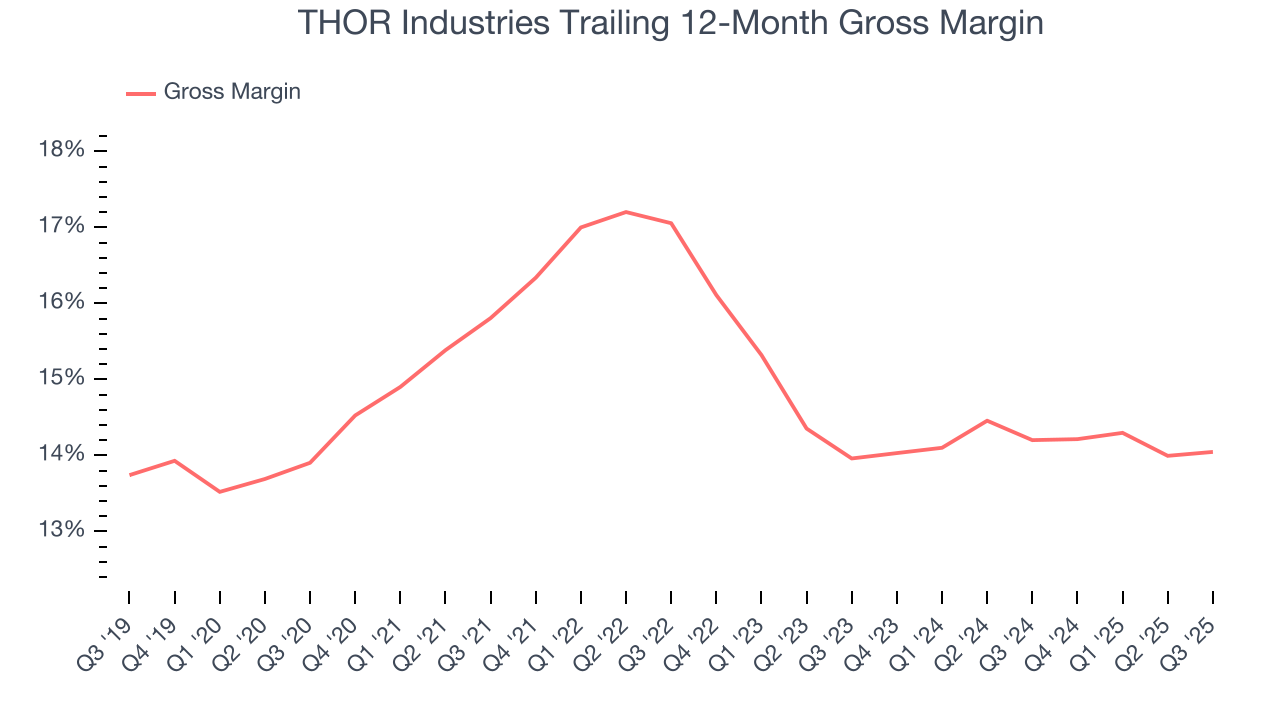
In Q3, THOR Industries produced a 13.4% gross profit margin, in line with the same quarter last year. Zooming out, the company’s full-year margin has remained steady over the past 12 months, suggesting its input costs (such as raw materials and manufacturing expenses) have been stable and it isn’t under pressure to lower prices.
7. Operating Margin
THOR Industries was profitable over the last five years but held back by its large cost base. Its average operating margin of 6.2% was weak for an industrials business. This result isn’t too surprising given its low gross margin as a starting point.
Analyzing the trend in its profitability, THOR Industries’s operating margin decreased by 4.1 percentage points over the last five years. This raises questions about the company’s expense base because its revenue growth should have given it leverage on its fixed costs, resulting in better economies of scale and profitability. THOR Industries’s performance was poor no matter how you look at it - it shows that costs were rising and it couldn’t pass them onto its customers.
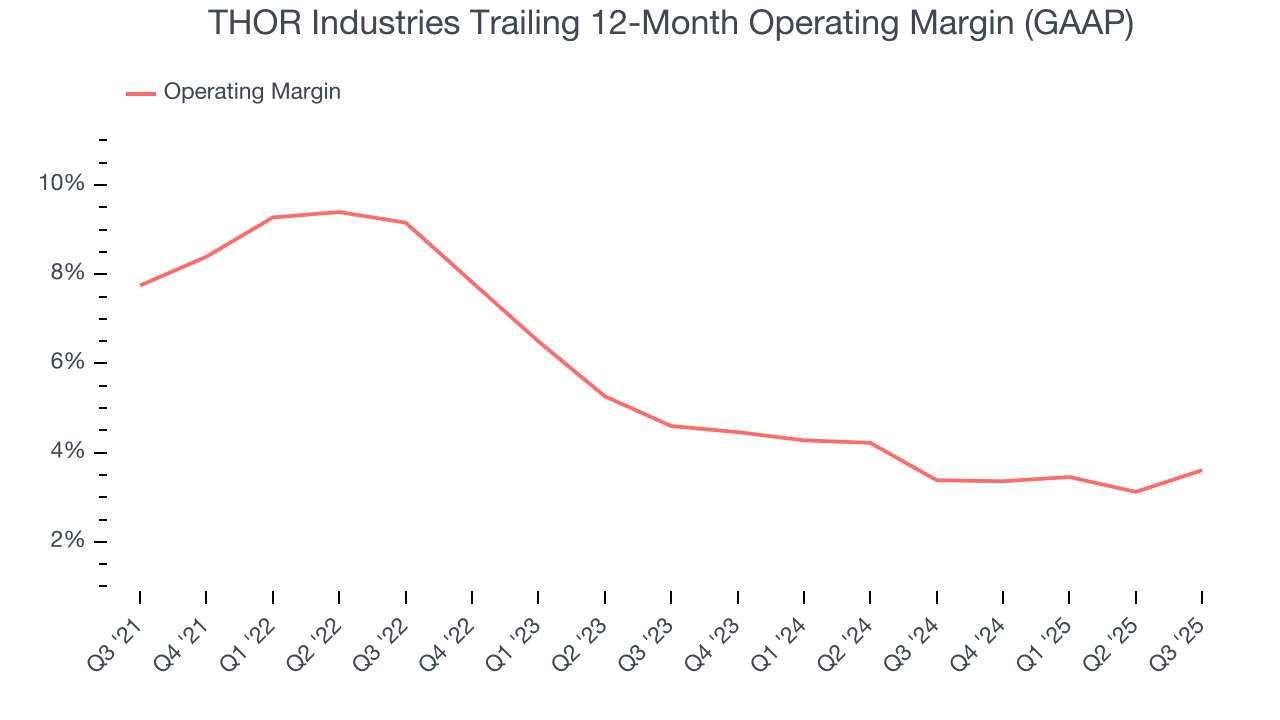
This quarter, THOR Industries generated an operating margin profit margin of 2.8%, up 2.3 percentage points year on year. The increase was encouraging, and because its operating margin rose more than its gross margin, we can infer it was more efficient with expenses such as marketing, R&D, and administrative overhead.
8. Earnings Per Share
Revenue trends explain a company’s historical growth, but the long-term change in earnings per share (EPS) points to the profitability of that growth – for example, a company could inflate its sales through excessive spending on advertising and promotions.
THOR Industries’s flat EPS over the last five years was below its 2.8% annualized revenue growth. This tells us the company became less profitable on a per-share basis as it expanded due to non-fundamental factors such as interest expenses and taxes.
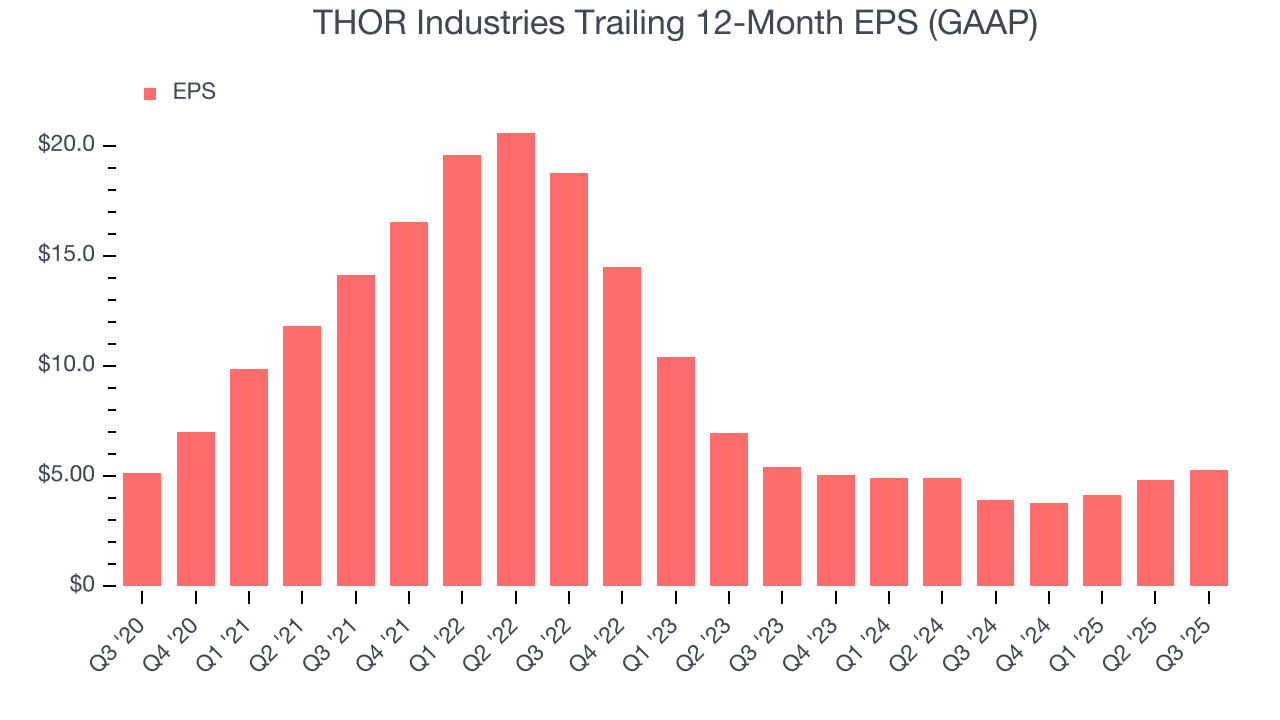
Diving into the nuances of THOR Industries’s earnings can give us a better understanding of its performance. As we mentioned earlier, THOR Industries’s operating margin expanded this quarter but declined by 4.1 percentage points over the last five years. This was the most relevant factor (aside from the revenue impact) behind its lower earnings; interest expenses and taxes can also affect EPS but don’t tell us as much about a company’s fundamentals.
Like with revenue, we analyze EPS over a more recent period because it can provide insight into an emerging theme or development for the business.
For THOR Industries, its two-year annual EPS declines of 1.2% show its recent history was to blame for its underperformance over the last five years. These results were bad no matter how you slice the data.
In Q3, THOR Industries reported EPS of $0.41, up from negative $0.03 in the same quarter last year. This print easily cleared analysts’ estimates, and shareholders should be content with the results. Over the next 12 months, Wall Street expects THOR Industries’s full-year EPS of $5.29 to shrink by 16%.
9. Cash Is King
Although earnings are undoubtedly valuable for assessing company performance, we believe cash is king because you can’t use accounting profits to pay the bills.
THOR Industries has shown mediocre cash profitability over the last five years, giving the company limited opportunities to return capital to shareholders. Its free cash flow margin averaged 5.3%, subpar for an industrials business.
Taking a step back, an encouraging sign is that THOR Industries’s margin expanded by 1.7 percentage points during that time. The company’s improvement shows it’s heading in the right direction, and we can see it became a less capital-intensive business because its free cash flow profitability rose while its operating profitability fell.
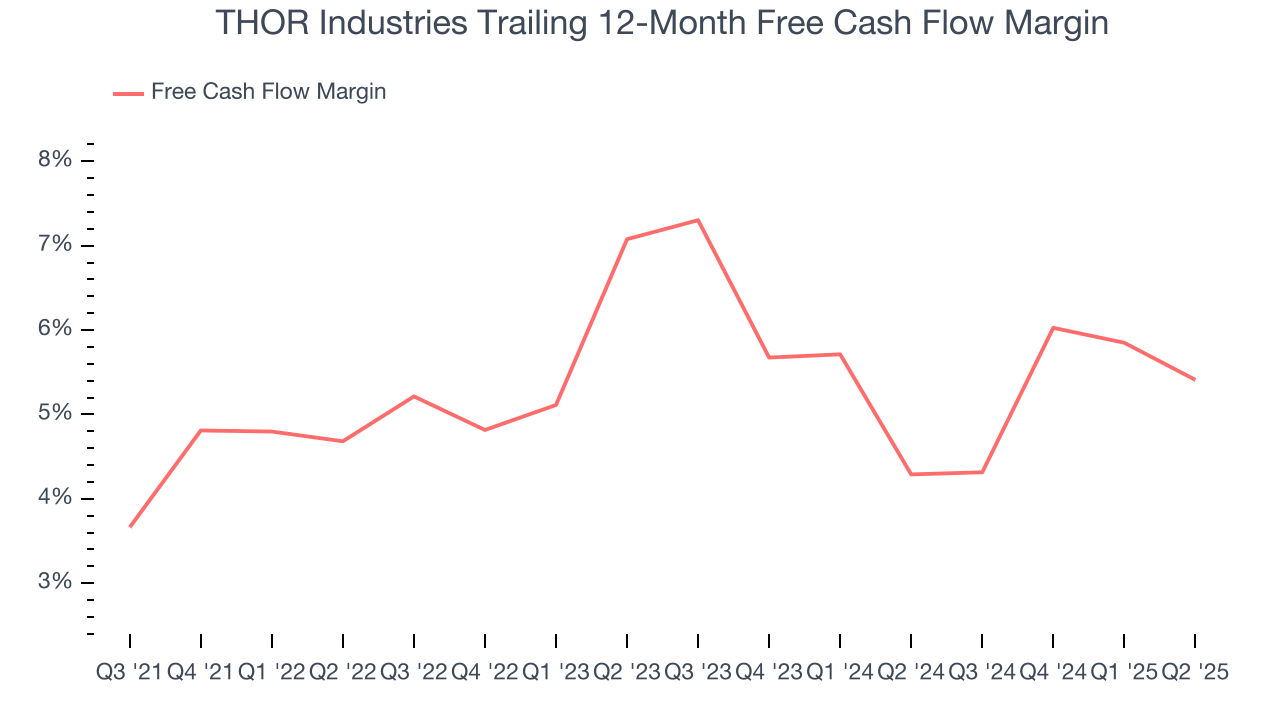
10. Return on Invested Capital (ROIC)
EPS and free cash flow tell us whether a company was profitable while growing its revenue. But was it capital-efficient? A company’s ROIC explains this by showing how much operating profit it makes compared to the money it has raised (debt and equity).
Although THOR Industries hasn’t been the highest-quality company lately because of its poor revenue and EPS performance, it historically found a few growth initiatives that worked. Its five-year average ROIC was 12.2%, higher than most industrials businesses.
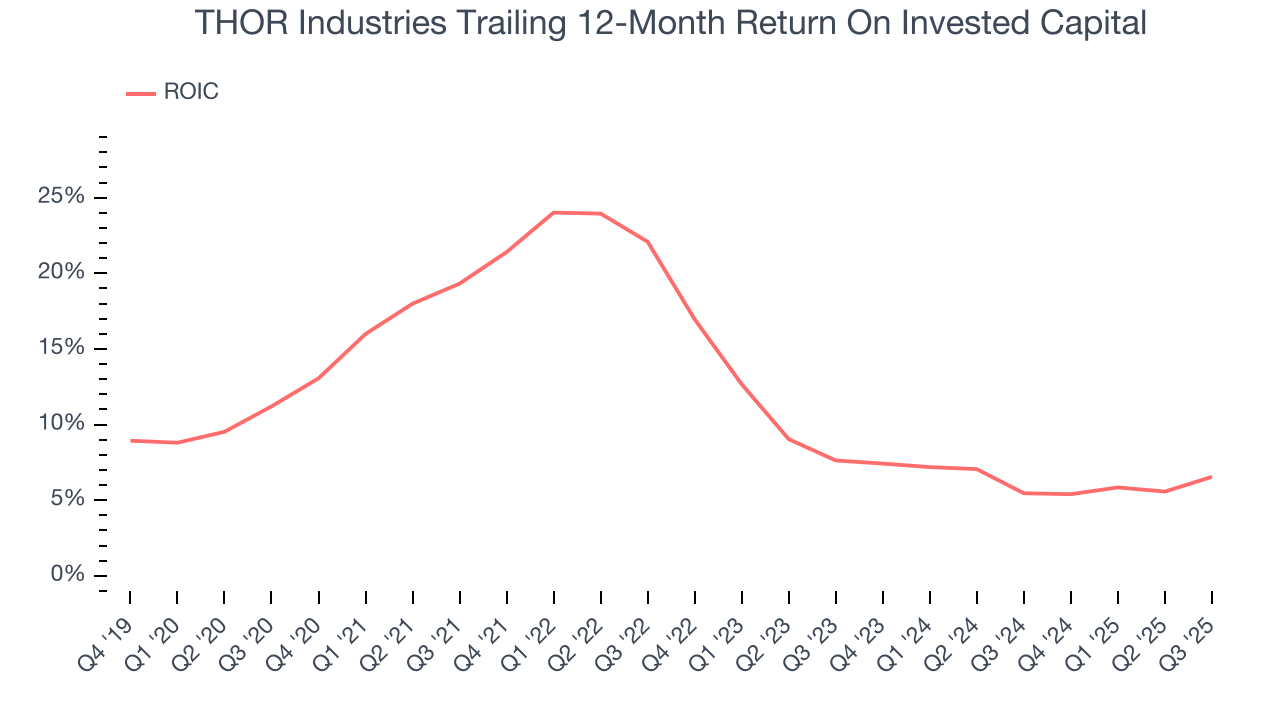
We like to invest in businesses with high returns, but the trend in a company’s ROIC is what often surprises the market and moves the stock price. Over the last few years, THOR Industries’s ROIC has unfortunately decreased significantly. We like what management has done in the past, but its declining returns are perhaps a symptom of fewer profitable growth opportunities.
11. Balance Sheet Assessment
THOR Industries reported $509.9 million of cash and $913.1 million of debt on its balance sheet in the most recent quarter. As investors in high-quality companies, we primarily focus on two things: 1) that a company’s debt level isn’t too high and 2) that its interest payments are not excessively burdening the business.
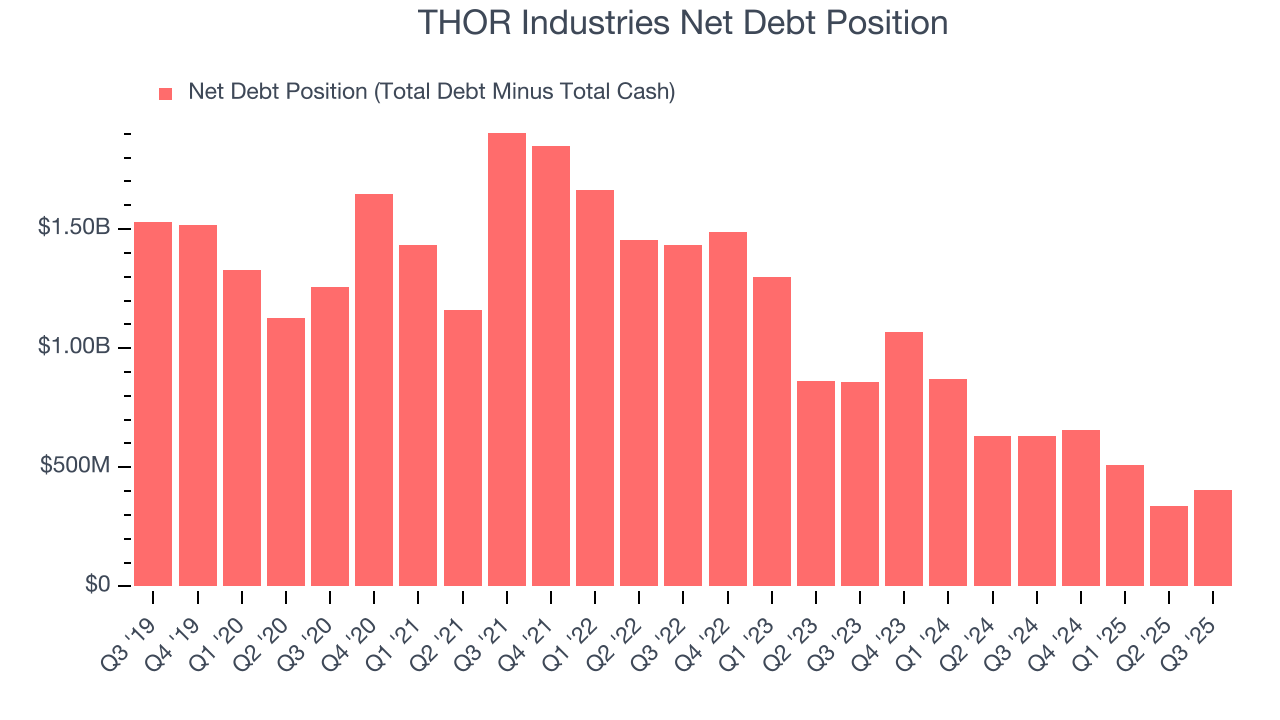
With $682.3 million of EBITDA over the last 12 months, we view THOR Industries’s 0.6× net-debt-to-EBITDA ratio as safe. We also see its $36.98 million of annual interest expenses as appropriate. The company’s profits give it plenty of breathing room, allowing it to continue investing in growth initiatives.
12. Key Takeaways from THOR Industries’s Q3 Results
It was good to see THOR Industries beat analysts’ EPS expectations this quarter. We were also excited its EBITDA outperformed Wall Street’s estimates by a wide margin. On the other hand, its full-year revenue guidance missed and its full-year EPS guidance fell short of Wall Street’s estimates. Overall, this print was mixed but still had some key positives. The stock traded up 1.6% to $112 immediately after reporting.
13. Is Now The Time To Buy THOR Industries?
Updated: December 24, 2025 at 10:22 PM EST
Are you wondering whether to buy THOR Industries or pass? We urge investors to not only consider the latest earnings results but also longer-term business quality and valuation as well.
THOR Industries doesn’t pass our quality test. For starters, its revenue growth was weak over the last five years, and analysts expect its demand to deteriorate over the next 12 months. And while its above-average ROIC suggests its management team has made good investment decisions, the downside is its diminishing returns show management's prior bets haven't worked out. On top of that, its projected EPS for the next year is lacking.
THOR Industries’s P/E ratio based on the next 12 months is 23.6x. This valuation tells us a lot of optimism is priced in - we think there are better opportunities elsewhere.
Wall Street analysts have a consensus one-year price target of $108.58 on the company (compared to the current share price of $106.24).

